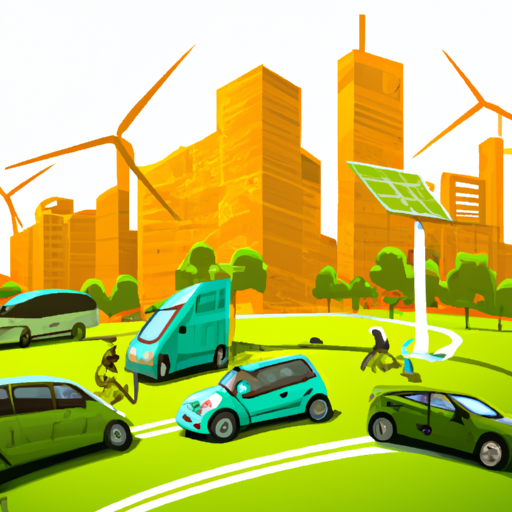Illinois has a unique chance to bring about substantial improvements in air quality, public health, and economic growth by embracing the Advanced Clean Cars II (ACC II) standard. ACC II requires car manufacturers to gradually increase the percentage of zero-emission vehicles (ZEVs) they sell each year, ultimately reaching 100% new ZEV sales by 2035. ZEVs include battery electric, plug-in hybrid electric, and fuel cell electric vehicles.
The Potential Benefits of ACC II for Illinois
A recent analysis conducted by ERM, on behalf of the NRDC (Natural Resources Defense Council), highlights the remarkable potential for Illinois to experience significant improvements in public health, environmental sustainability, and economic prosperity through the implementation of the full ACC II program.
The report evaluated various scenarios, and the findings are truly promising:
Cleaner Air and Improved Health
Compared to the Baseline scenario, the ACC II scenarios, especially with a clean grid, are projected to achieve a drastic reduction in annual NOx emissions by 97% and PM emissions by 95% in the light-duty vehicle (LDV) fleet by 2050. These emission reductions would have a profound impact on the health of Illinois residents, leading to 416 to 450 fewer premature deaths, 420 to 456 fewer hospital visits, and 246,263 to 266,490 fewer minor illnesses between 2027 and 2050. The estimated value of these public health benefits ranges from $5.5 billion to $5.9 billion.
Reduced Greenhouse Gas Emissions
Under the ACC II scenarios, cumulative greenhouse gas (GHG) emissions from Illinois’s LDV fleet could be reduced by 335 to 377 million metric tons of CO2e between 2027 and 2050, compared to the Baseline scenario. The estimated value of these GHG emissions reductions amounts to $29.4 billion to $32.7 billion.
Lifetime Cost Savings for ZEV Owners
When ACC II is fully implemented in 2027, the average ZEV owner in Illinois could save approximately $19,000 in lifetime costs compared to owning a conventional vehicle. By MY 2030 and beyond, the savings could increase to up to $21,000.
For rural residents, who may prefer ZEVs with longer ranges but higher upfront costs, the savings are still substantial. An MY 2027 ZEV could save its owner $10,000 over its lifetime compared to a gasoline vehicle, and an MY 2030 ZEV could result in lifetime cost savings of around $18,500. Rural owners of ZEVs purchased after MY 2030 could enjoy total savings exceeding $22,000.
Economic Opportunities and Revenue Generation
ACC II also presents economic opportunities for Illinois. Under the ACC II Flex scenarios, net utility revenue from light-duty electric vehicle charging is projected to be $50 million in 2030, $477 million in 2040, and over $598 million in 2050. The ACC II Full + Clean Grid scenario is even more promising, with net utility revenue of $82 million in 2030, $494 million in 2040, and over $600 million in 2050.
Additionally, as more vehicles transition to ZEVs, Illinois could benefit from lower average residential and commercial electricity rates, which could be approximately 2.3% lower by 2050. This translates to an average savings of $42 per year for households and $356 per year for commercial customers.
The deployment of ZEV charging infrastructure would also bring substantial investments to Illinois. Implementing ACC II would require the installation of up to 5.4 million in-use charge plugs, generating approximately $14 billion in cumulative investment by 2050.
Job Creation and Higher Wages
Adopting ACC II is projected to create over 18,212 new jobs by 2030, bringing economic growth to Illinois. Moreover, these new jobs are expected to offer average wages about 50% higher than the jobs they would replace.
The Cumulative Net Societal Benefits by 2050
Considering all of the above, the cumulative net societal benefits under different ACC II scenarios are substantial, reaching $168.8 billion under the ACC II Flex scenario, $169.9 billion under the ACC II Flex + Clean Grid scenario, and $178 billion (equivalent to roughly $550 per person in the US) under the ACC II Full + Clean Grid scenario.
Seizing the Benefits Through ACC II Adoption
To fully unlock these tremendous benefits, Illinois must adopt ACC II before the end of this year. By doing so, the state can ensure that ACC II is implemented starting in MY 2027. This way, Illinois residents can fully enjoy the significant public health improvements, climate benefits, and economic advantages as the state makes the transition to a cleaner and more sustainable transportation system.
























